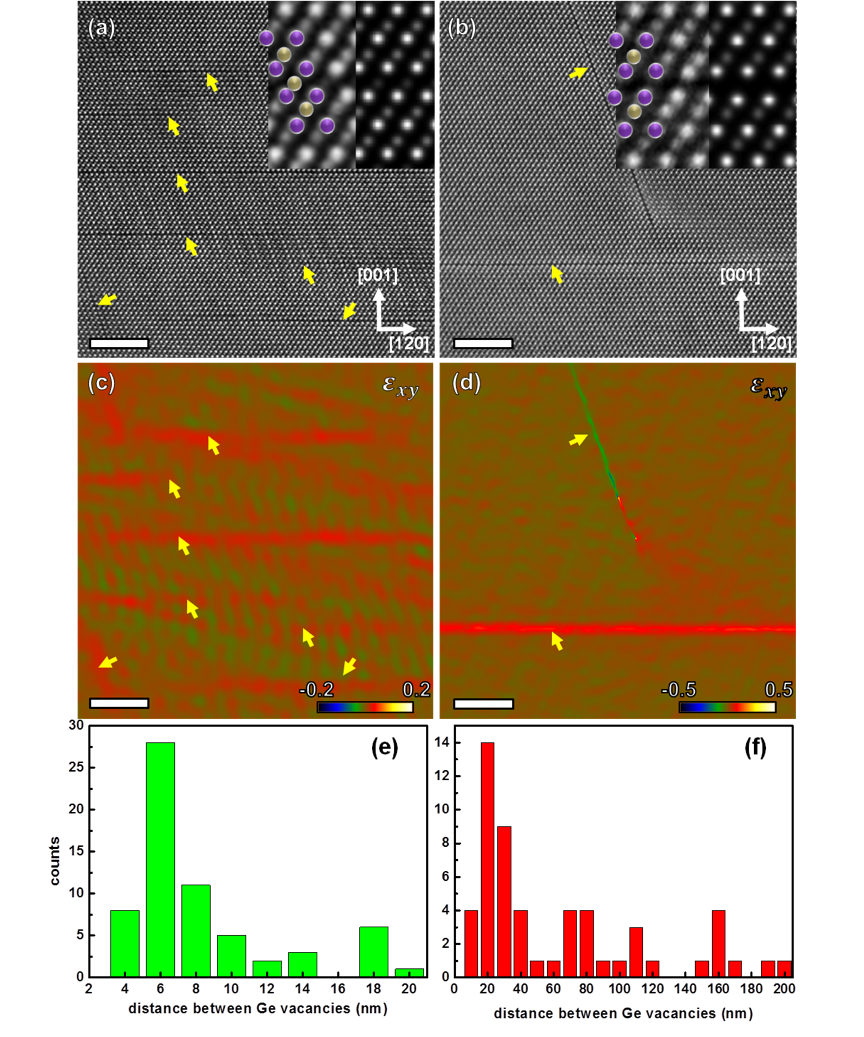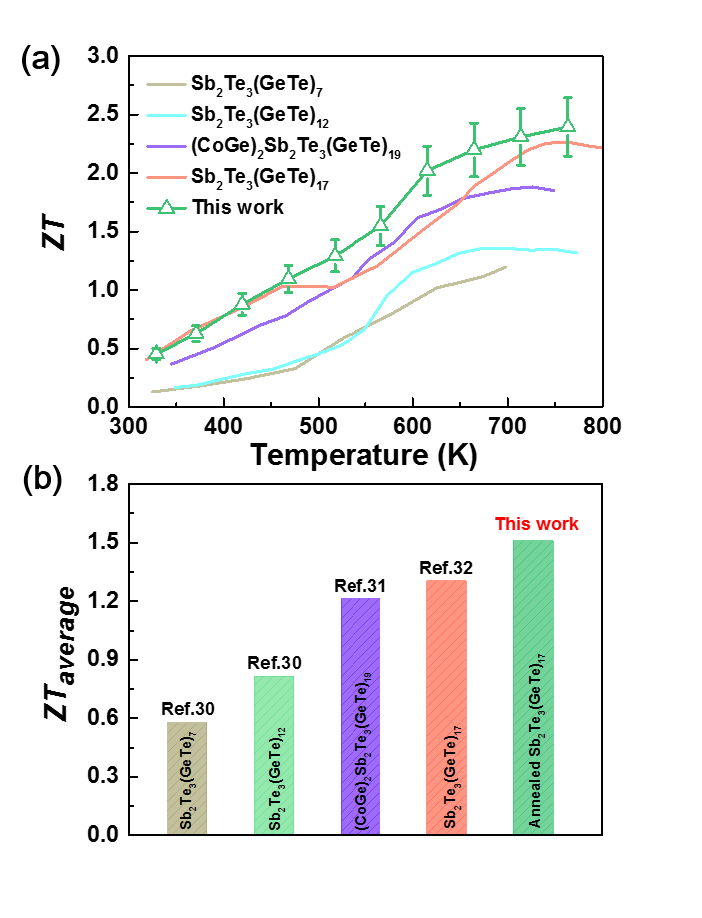Southern University of Science and Technology (SUSTech) has had many pieces of research published this year. Ph.D. student Xu Xiao from Professor He Jiaqing’s team at the Department of Physics was recently published as the first author in Advanced Science (Impact Factor 12.4).
His academic paper was called “Boosting the Thermoelectric Performance of Pseudo-Layered Sb2Te3(GeTe)n via Vacancy Engineering.” Professor He Jiaqing was the correspondent author, and Research Associate Professor Xie Lin was the co-first author of the paper with Xu Xiao.
Thermoelectric materials are new energy materials that can directly convert between thermal energy and electrical energy. They have broad commercial applications in thermoelectric refrigeration and waste heat power generation. It plays an important role in improving existing energy utilization and alleviating the energy crisis. However, medium-temperature thermoelectric materials that are easy to be used for large-scale commercial applications face low efficiency and lead content in raw materials. Thus, the development and utilization of low toxicity medium-temperature thermoelectric materials have attracted the attention of more researchers.
 Sb2Te3(GeTe)n-based thermoelectric materials are less toxic, and their unique bismuth layer structure can bring lower thermal conductivity. However, due to the high concentration of Sb2Te3(GeTe)n material, its efficiency is affected, further restricting further development of thermoelectric materials.
Sb2Te3(GeTe)n-based thermoelectric materials are less toxic, and their unique bismuth layer structure can bring lower thermal conductivity. However, due to the high concentration of Sb2Te3(GeTe)n material, its efficiency is affected, further restricting further development of thermoelectric materials.
Xu Xiao made an analogy, saying that the carriers in the Sb2Te3(GeTe)n material are like cars driving on the road. More carriers are like more cars, and it will eventually cause a traffic jam, effectively reducing the efficiency of thermoelectric materials.
Professor He Jiaqing’s team found in the study that the type of cation defects in Sb2Te3(GeTe)n-based materials can be effectively controlled by appropriate annealing processes. This work uses in-situ observation techniques of spherical aberration correction electron microscopy and high-angle dark-field scanning transmission electron microscopy. By comparing the samples before and after annealing with the simulated annealing process under an electron microscope, it is clear that the type of cationic defects in Sb2Te3(GeTe)n-based materials can be tracked by short-range point defect in the evolution process. It also optimizes the materials performance of the thermoelectric materials.

This work has greatly improved the overall performance of Sb2Te3(GeTe)n based thermoelectric materials. The higher the value of ZT, the higher the conversion efficiency. When the temperature reaches 773K, the ZT of the thermoelectric material reaches 2.4. In the wide operating temperature range of 323-773K, the average ZT of the material is as high as 1.51, which meets the performance demand of thermoelectric materials in the medium temperature zone in commercial applications. This is expected to solve the problem of low efficiency of Sb2Te3(GeTe)n based thermoelectric materials.
The research has great commercial applications for low-grade waste heat power generation, wearable self-driving electronic devices, and intelligent sensing devices. These commercial applications can take advantage of the benefits of thermoelectric materials in the future.
The research was also supported by research assistant professor of physics Wu Di (now a professor at Shaanxi Normal University). 2016 undergraduate student Lou Qing also took part in some of the research work. The development and completion of this work have been supported by the National Natural Science Foundation of China, the Natural Science Foundation of Guangdong Province, and the Basic Research of Shenzhen Municipal Science and Technology Innovation Commission.
He Jiaqing spoke about his research work: “The most beautiful scenery will not always be on the road you envision. Never forget to seek knowledge, as you will eventually reap your reward. In general, repeatedly measuring the same experiment will see a drop-off in your performance, but we still found stability in the performance of the samples. This provided an advantage as well as questions.
Why is it so stable? Is there any physical mechanism behind us that we didn’t understand? In the end, we learned through the relevant experiments and got the existing ones. This result is also crucial to the material of the entire system.”
He Jiaqing said that he always believes that innovation is the core and key to the development of a talent pipeline. It is not necessary to regulate their thinking. Instead, we should fully mobilize the students’ creative thinking, in order to produce more innovative talents in the hot spot of the research of SUSTech.
Paper link: https://doi.org/10.1002/advs.201801514
Tips for scientific terminology:
Thermoelectric material merit ZT:
The thermoelectric conversion efficiency of thermoelectric materials mainly depends on the figure of merit ZT, and its expression is ZT = α2 · σ · T / κ, where α is the Seebeck coefficient, σ is the conductivity, κ is the thermal conductivity, and T is the temperature. The higher the ZT value of the thermoelectric material, the better. It is known that to improve the thermoelectric conversion efficiency of the thermoelectric material. It is necessary to increase the Seebeck coefficient and conductivity and reduce thermal conductivity.
Carrier:
A carrier is a particle that carries a charge and can move and transport current, including electrons, ions, and the like. There are two types of carriers in a semiconductor, namely negatively charged free electrons and positively charged free holes.
Proofread ByXia Yingying
Photo ByDepartment of Physics